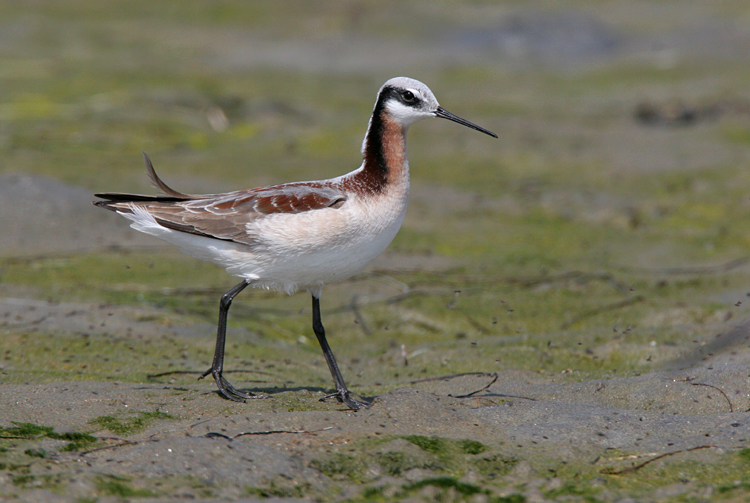
Date: 2008-04-20
Lens: Canon 600mm IS F4 + 1.4x II Converter

 Wilson's Phalarope
Phalaropus tricolor
Wilson's Phalarope
Phalaropus tricolor
 Description
DescriptionUnlike most birds, the Wilson's Phalarope female is flashier and brighter plumaged than the male. The phalarope genus name, Phalaropus, means "coot-footed" and was inspired by the phalarope's feet which are adapted for swimming. Two of the phalarope species winter at sea and have semipalmate (partially webbed) feet with lobed toes, while the more terrestrial Wilson's Phalarope has flanged toes.
General: 9 inches in length.
Adult Male Alternate: Brown crown, eyeline, and sides of neck. Grayish-brown back and upperwings. White throat, supercilium, hindneck, breast, belly and rump. Pale gray tail. Pale rusty foreneck. Thin, needle-like, straight, black bill. Black legs. Much paler than female.
Adult Female Alternate: Pale gray crown and nape. Thick, dark eyeline extends down the neck and onto the back. Whitish hindneck. Rusty-orange foreneck. White supercilium, throat, breast, belly, and rump. Gray back, upperwings and tail. Rusty-reddish stripes on back. Thin, needle-like, straight, black bill. Black legs.
Adult Basic: Gray crown, hindneck, and back. White throat, breast, and belly. Pale gray face with variable eyestripe. Thin, needle-like, straight, black bill. Yellowish legs.
Juvenile: Similar to adult basic, but browner overall. Buffy wash on neck, chest, and feather edges on back and upperwing coverts. Darker crown and eyestripe.
Mudflats, shallow ponds and lakes.
 Nesting
Nesting4 pale buff eggs with brown spots. The incubation period is 16-21 days. Fledging occurs ? days after hatching. The nest is a grass-lined ground depression near water.